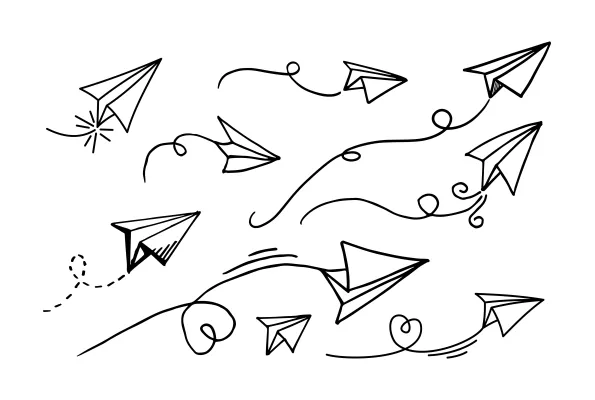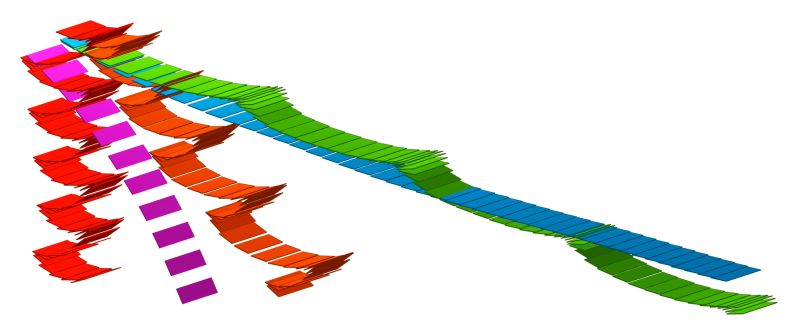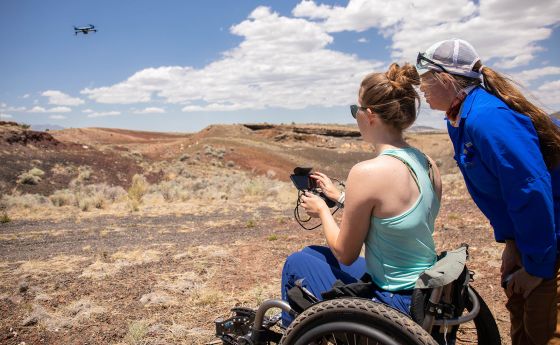
Cool Science: Paper airplanes, insect wings and the future of tiny drones
Conduct your own aerodynamics experiment at home
For nearly 200 years, in the great pursuit of knowledge about aerodynamics, researchers have been fascinated by paper airplanes. Even the simplest design – a plain sheet of paper with no wings or fins, nothing resembling a modern airplane – can provide insights into complex aerodynamic principles.
A rectangular sheet of paper will tumble to the ground like confetti, but adding just the right amount of weight, in just the right location, affects how the paper flies.
Leif Ristroph, an associate professor at New York University and self-described paper airplane fanatic, said the idea to study the aerodynamics of a falling sheet of paper began with curiosity about the movement.
“The magic that makes a paper airplane glide and not flutter is how you weight it. You don’t need all the other aspects,” Ristroph said. “It feels like someone must have observed this before because it seems so basic but I couldn’t find it. It’s worth understanding, then.”
And while designing a passenger airplane that resembles a sheet of paper is a horrible idea, he said, the research could contribute to new ways of thinking about the design of simple aircraft such as tiny drones.
Observations in air and water
Researchers added strips of metallic tape to one of the long edges of a rectangular sheet to create varying degrees of front weight. When dropped, each sheet moves in a unique way. “There is kind of a magic spot for the balance point where you can get the best glide. If the balance point is too close to the middle, you will see fluttering and tumbling motions. If the balance point is too far forward, it will nose-dive and crash. The best point is about halfway between the middle of the sheet and the front edge. Then you will see a nice glider,” Ristroph said.
Part of Ristroph’s work for his doctorate in physics was studying insect flight and how flapping wings affect flight control and stability. The paper airplane study was not part of his planned research under a U.S. National Science Foundation grant, but the relationship between insect wings and falling paper stood out, and the results contribute to a more general understanding of animal flight and swimming dynamics.
Plus, sheets of paper are easier to maintain in the laboratory than insects, he said.
Ristroph also made observations using a water tank and thin plates of plastic, whose “flight” through water (video above) are governed by the same physics that determines the motions of paper falling through the air. In both instances, the rate and control of the fall was affected by the location of the weight and the impact it had on the center of mass. There is a “sweet spot” for the center of mass that produces a stable glide path.
Next steps
Based on the results, Ristroph and his team created a mathematical model that serves as the basis of a “flight simulator,” a computer program that reproduces the different flight motions. No such model had previously existed for predicting gliding flight.
“The simulator can produce the full range of motions accurately. It describes the forces acting on the plate and finds out how the flyers should move based on the forces used in the equation. I think for the scientific community, that will translate well into something useful for everyone involved,” he said.
The findings could also contribute to new design methods for drones. “There are a lot of people working on making very small-scale flying robots. There are even some designs that are passive flyers – not powered – that are modeled on flying plant seeds that twirl like helicopters when they fall.”
These passive drones can be used for projects like air quality monitoring.
“There is an initiative to make small flyers, and at very small scales, simpler is better,” Ristroph said. “When you think about paper airplanes, it doesn’t get much simpler than that. I’m not an engineer who can make a useful flying robot, but I hope our findings will inspire others who can.”
“Studying toys is serious fun. Whether it’s a paper airplane or a spinning top, there is something scientifically valuable in finding out how they work.”
Experiments with aerodynamics at home
Ristroph’s research includes a component dedicated to training STEM students in aspects of modern applied mathematics, emphasizing the connections among modeling, simulation and experimental observation.
And his experiments are simple enough that they can be conducted anywhere. “I like to think of the whole world as a laboratory. There are simple experiments in front of you. The things you see around you are fascinating if you look at them in the right way,” he said.
Want to replicate the experiment at home? The basic materials are a notepad or copy paper about 6 inches long and 2 inches wide that can be folded and tape or paper clips that can be used to add weight.
“Studying toys is serious fun,” Ristroph said. “Whether it’s a paper airplane or a spinning top, there is something scientifically valuable in finding out how they work.”




